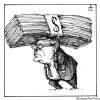Provincial election is a huge opportunity lost
The city needs major improvements, but the case wasn't made
Advertisement
Read this article for free:
or
Already have an account? Log in here »
To continue reading, please subscribe:
Monthly Digital Subscription
$1 per week for 24 weeks*
- Enjoy unlimited reading on winnipegfreepress.com
- Read the E-Edition, our digital replica newspaper
- Access News Break, our award-winning app
- Play interactive puzzles
*Billed as $4.00 plus GST every four weeks. After 24 weeks, price increases to the regular rate of $19.00 plus GST every four weeks. Offer available to new and qualified returning subscribers only. Cancel any time.
Monthly Digital Subscription
$4.75/week*
- Enjoy unlimited reading on winnipegfreepress.com
- Read the E-Edition, our digital replica newspaper
- Access News Break, our award-winning app
- Play interactive puzzles
*Billed as $19 plus GST every four weeks. Cancel any time.
To continue reading, please subscribe:
Add Winnipeg Free Press access to your Brandon Sun subscription for only
$1 for the first 4 weeks*
*$1 will be added to your next bill. After your 4 weeks access is complete your rate will increase by $0.00 a X percent off the regular rate.
Read unlimited articles for free today:
or
Already have an account? Log in here »
Hey there, time traveller!
This article was published 01/10/2011 (5115 days ago), so information in it may no longer be current.
In case you haven’t noticed, Winnipeg is turning a significant corner in its history. From the stand-still city of the past 30 years, this place is busting out all over and unless we get ahead of the parade with regard to moving traffic quickly and efficiently, our quality of life will suffer greatly and the growth itself might be stalled.
Back in the 1970s, Winnipeg city council passed a knee-jerk motion outlawing freeways within the city boundaries. It stands right up there with the motion declaring our city a “nuclear free zone” when it comes to stupid ideas but it is turning out to be much more dangerous.
We have new sports facilities, new cultural facilities, new industrial areas and whole new residential subdivisions, with more on the horizon. Infill is rapidly becoming a non-option with the exception of the downtown core. Even the newly minted version of Plan Winnipeg says we will run out of undeveloped land in about 20 years.

The Canadian Museum for Human Rights and the doubling in size of the Winnipeg Convention Centre are on the near horizon and a major plank in the incumbent provincial government’s election plan is to encourage the conversion of all major downtown surface parking lots into various forms of residential and business developments. An average of two new hotels a year can be expected to be built for the next five to 10 years. And you think downtown traffic is bad now?
The city is preoccupied with renewing our existing inadequate traffic infrastructure but doesn’t even have enough money to keep up with the steady deterioration of our roads. The province is slowly rebuilding Highway 75 to the U.S. border and resurfacing portions of the Trans-Canada Highway.
The only new major traffic projects underway are the $250 million widening and extension of Inkster Boulevard skirting Winnipeg International Airport through the Rural Municipality of Rosser to the west Perimeter Highway, the eastern leg of the Chief Peguis Trail and the first leg of the bus rapid transit roadway allowing buses to bypass Confusion Corner.
The first project is meant to solve a problem we don’t yet have as the industrial area it is meant to serve is still a bunch of wheat fields. Chief Peguis goes from nowhere to nowhere and a single new road for our existing bus fleet just isn’t going to cut it.
The first part of the solution to our growing traffic problem is to finish the inner perimeter beltway, which was first dreamed up by the old metro government in the 1960s. Rue Lagimodiere was the first leg of the beltway to be built and parts of it are decaying already. The south leg, Bishop Grandin Boulevard, is mostly complete and the Charleswood corridor is in place. All that remains to be done is the extension of Chief Peguis from Main Street west across McPhillips Street and link it with an upgraded Sturgeon Road and Moray Avenue. The extension of Bishop Grandin to the Charleswood corridor will complete the entire loop.
Public transit must play a much larger role in moving Winnipeggers and visitors around and through the city that is growing not only in size but also in “places to be” that are scattered throughout the city. Our rag-tag collection of yellow and orange pumpkins isn’t going to handle the job in either quantity or quality. It is time for another form of public transit that is capable of moving large numbers of people quickly and comfortably.
The first step should be to build two light rail transit lines. One leg would be an east-west route along Portage and Regent Avenues from the west Perimeter to the east side of Transcona. The other line would travel south along Main Street from the north Perimeter to Pembina Highway at St. Norbert. Later sections along Henderson Highway, St. Mary’s Road, Grant Avenue and Kenaston Boulevard should already be on the drawing board.
The obvious question is who will pay for all this. If we wait for city council to tax us for it all, we will wait forever.
The answer is the same as it has been for Vancouver, Calgary, Edmonton, Toronto, Ottawa and Montreal. The federal government, with a little help from the province, must bear the vast majority of the cost.
Those cities all have LRT lines and freeways paid for by senior levels of government and the best part is that, being last, we can learn from their mistakes and design better solutions.
When the city first planned for Bishop Grandin Boulevard, all major intersections were to be grade separated. In reality, only Pembina Highway made the grade. Closer to the present, the eastern leg of Chief Peguis is now under construction and the only grade separation planned is the politically motivated intersection at Rothesay Street.
An example of how slow to react this city has been can be seen in the planned western leg of Chief Peguis. Land for the leg from Main Street to McPhillips Street was expropriated in 1976. That’s 35 years and nothing more has been done. When it is finally built, will the intersections at Main and McPhillips be grade separated? Of course not; and for the same reason Bishop Grandin mostly resembles a linear parking lot many times of the day. The city can plan properly but it can’t build transportation projects in a timely fashion or to desired standards on its own.
This election should have been an opportunity to press home the need for these improvements, but, unfortunately, it was an opportunity lost and we won’t get another one for four years.
Mike O’Shaughnessy is a former city councillor.








